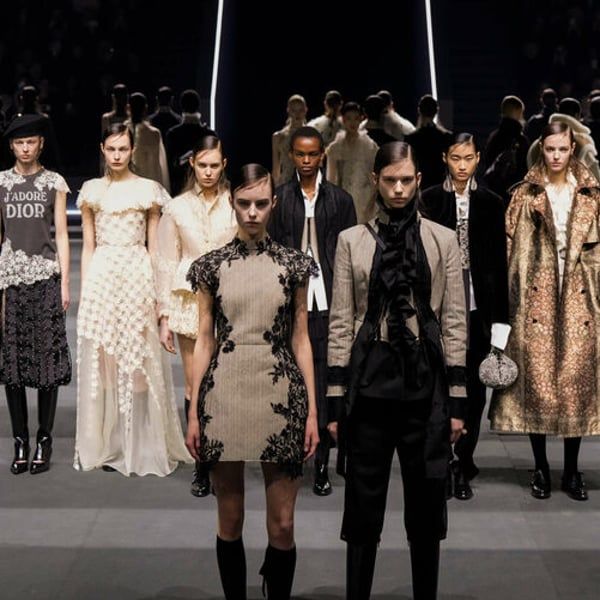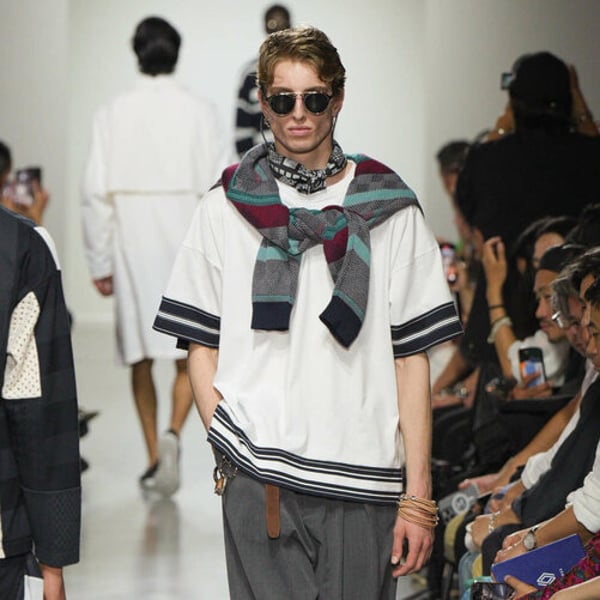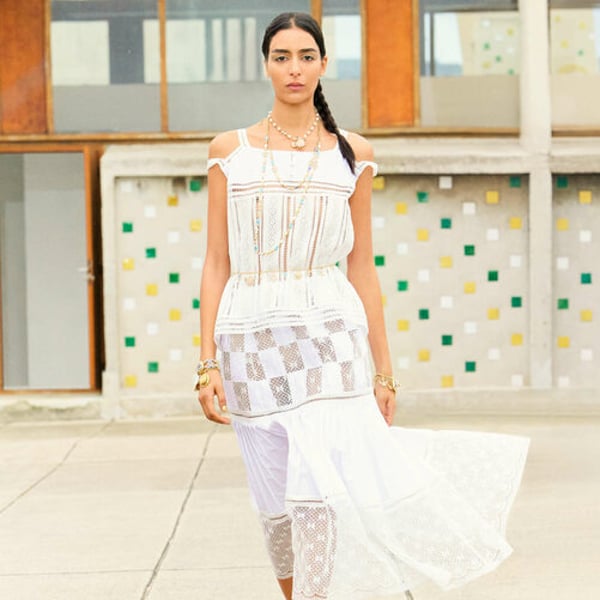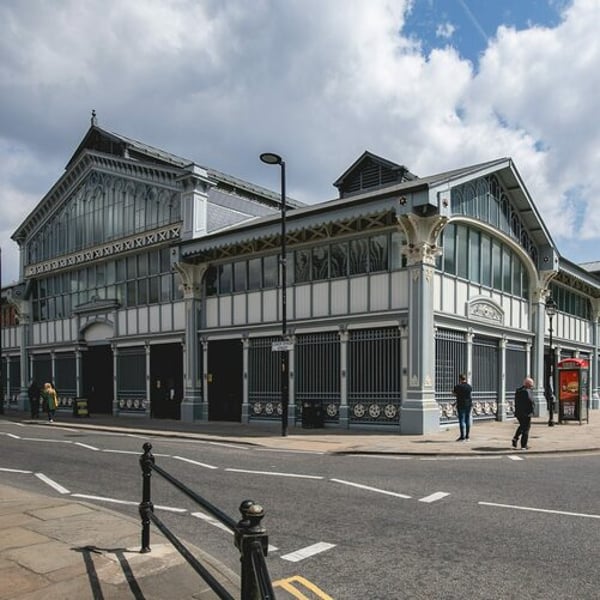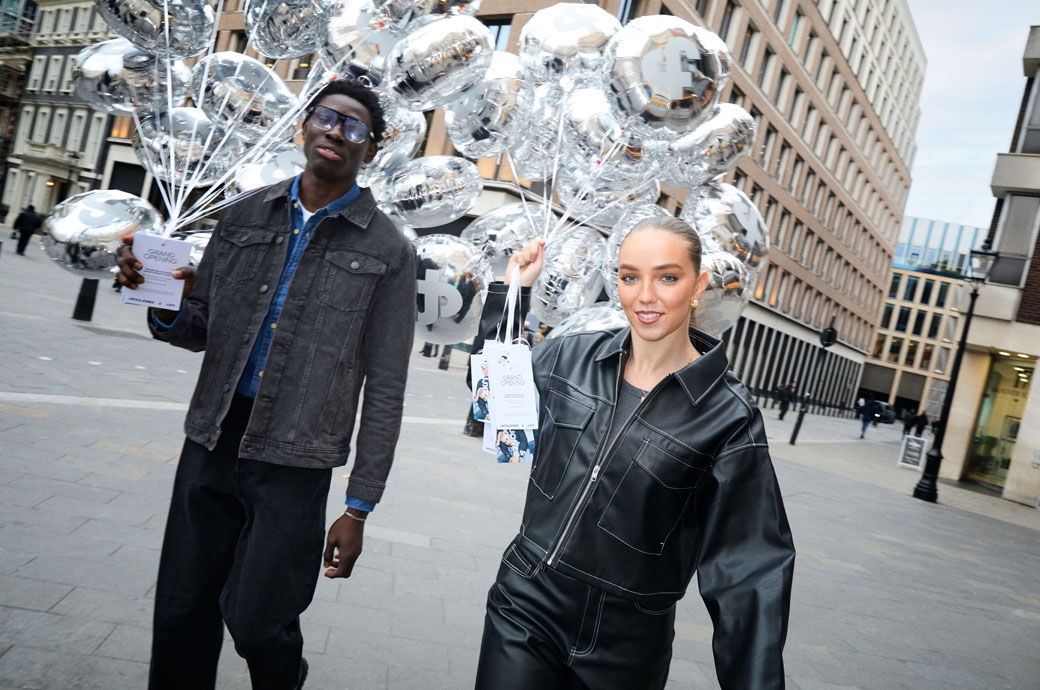Leave it to Maria Grazia Chiuri, Dior, Virginia Woolf and Robert Wilson to create the most fascinating show, or rather, of the international season so far.
For the autumn/winter 2025 collection, Chiuri transformed a personalized modernist theater into the mourae in a stage where fashion was with literature. She combined the historical flowers of the tumultuous novel by Virginia Woolf “Orlando” with elements of the DNA of Dior, inspired by Gianfranco Ferré and John Galliano. The result was a bold and beautiful collection, one of his best for Dior.
Chiuri structured the show as a work of five acts, opening with a bleak tone while the cast walked at an almost funeral pace, dressed in short short jackets, pants, elongated redingtes and curved pods. Each look had lace details, from tailoring to socks and knee shoes.

In an informative session prior to the show, Maria Grazia Chiuri explained that her reference point was Gianfranco Ferré precisely because she was the first Dior designer who had not worked with Monsieur Dior.
“Ferré is very likely to be less celebrated because he worked at a time when fashion communication was very different. Galliano came to an explosion of interest in fashion, so perhaps Ferré's time was less appreciated,” said Chiuri.
Therefore, she put on the famous white shirt of Ferré, using man versions in a gender -free expression, synchronized with “Orlando”, where the protagonist poet changes from sex to woman to woman, living several centuries of English literary history.
Then he reinterpreted Ferré's famous corsets in a new and surprising hybrid jacket that will be admired by many and copied by minor talents. Any other thing that can be said about Chiuri's seven -year mandate in Dior has undoubtedly turned the brand one of the most replicated in fashion. And, as in life, imitation remains the highest form of flattery.
As the show was developed, the clothes began with a clearly masculine edge, such as a red -corted Granadier guards of Granadier, designed to wear with the necklace and combine with a white shirt with flyers of “Gianfranco Chiuri” flyers. Or the black jacket of an excellent officer, completed with frogs and used with one of a mini corsets Gilet score.

Then came with flyers, flowers, layers, dresses and trains with flyers. There were also some new historical versions of the Gabardina or Parka that somehow managed to combine touches of the love of John Galliano for the Renaissance and the Baroque, other signifiers in Dior's house, which has the greatest concentration of DNA in fashion.

The show became a crescendo when the entire cast was inside Robert Wilson's theater. Maria Grazia Chiuri took her arch, greeting towards the section where CEO Delphine Arnault sat smiling.
“I have to say that I feel very honored to work with Bob Wilson. In my opinion, it is easier for a designer to create clothes for cinema or theater than for a great director to work in a catwalk show. Another reason why I was impressed by Bob's ideas,” he said.
In 1996, Robert Wilson created a theatrical production of a single act of “Orlando”, which premiered at the Edinburgh Festival with Miranda Richardson in the main role. Although the novel “Orlando” has six sections, ends with the husband of the Captain of the Orlando Sea, approaching his head on a plane. Then a street bird appears when Orlando shouts: “It's a goose! The wild goose!”

An image that Wilson evokes with a flutter bird that surrounds the hairstyle in the Tubleías, sliding over the abrupt positions designed as a university auditorium, as if the fashionists were students of Medicine gathered to study the dissection of a corpse, Chiuri explained, adding: “Fashion is, a base, an acting. It gives you the opportunity to work with other creative disciplines.
With the growing speculation that this can be the final collection of Dior de Maria Grazia Chiuri that will organize in Paris, some see “Orlando” as an adequate metaphor for their time in the house. She has brilliantly extracted the archives of the brand, DNA and multiple designers, even when she reinvented them all with a feminist inclination.
When asked about the comparison, the eyes with chiuri coal mount shone. “Oh, I don't think designers make great criticisms. Each one focuses on their own work: designers, photographers, writers or artists. But that is their opinion … I prefer to see fashion as an expression of our time, where changes in fashion also express the passage of time.”
Copyright © 2025 Fashionnetwork.com All rights reserved.

